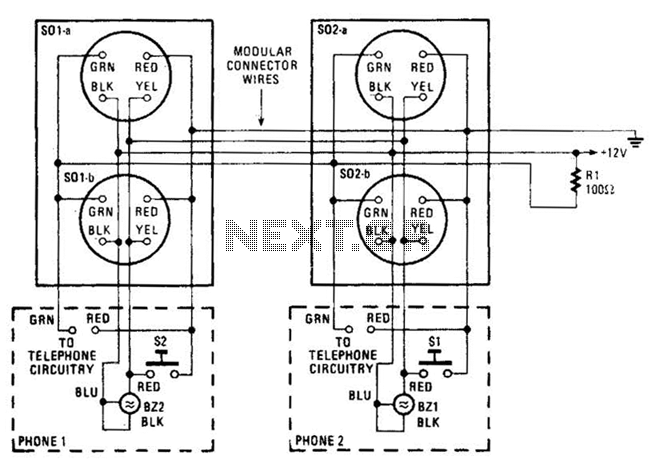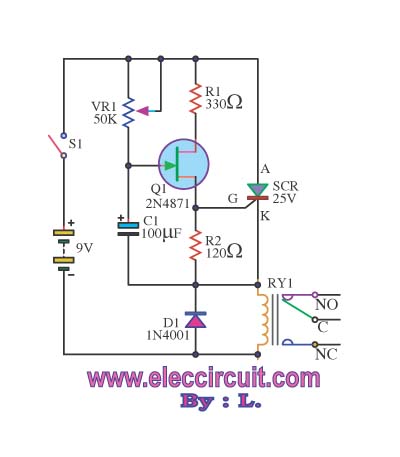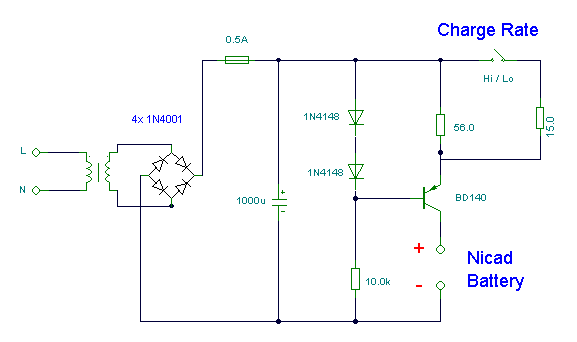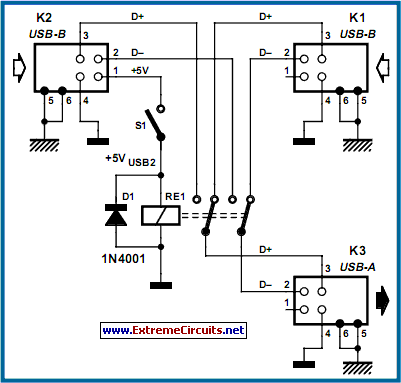
Logarithmic light-meter circuit
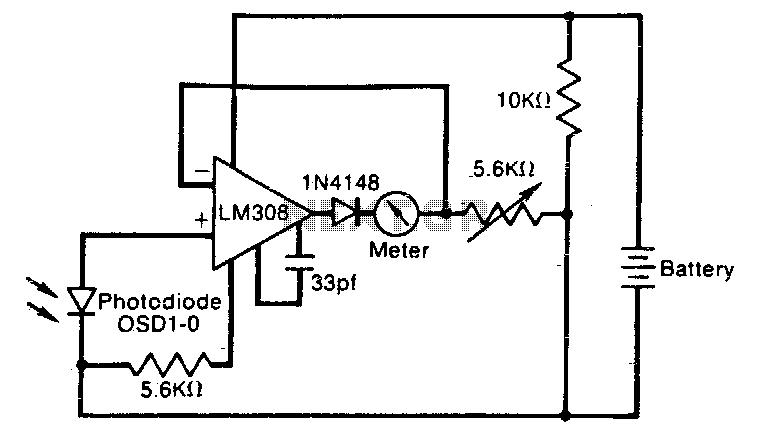
The meter reading is directly proportional to the logarithm of the input light power. The logarithmic circuit behavior arises from the nonlinear diode p-n junction current/voltage relationship. The diode in the amplifier output prevents the output voltage from becoming negative, which may occur at low light levels due to amplifier bias currents. Resistor R1 adjusts the meter's full-scale deflection, enabling the meter to be calibrated.
The described circuit utilizes a logarithmic amplifier configuration to measure light intensity. The core principle relies on the logarithmic relationship between the input light power and the output voltage, which is facilitated by the characteristics of a p-n junction diode. This diode exhibits a nonlinear response to varying current, providing the necessary logarithmic scaling of the input signal.
In this configuration, the output of the amplifier is connected to a diode that ensures the output remains at or above zero volts. This is crucial in preventing the meter from saturating or "pegging" when the light levels are low, which could lead to misleading readings due to amplifier bias currents. The bias currents can cause the output to dip below zero, resulting in inaccurate meter deflections.
Resistor R1 plays a pivotal role in calibrating the meter. By adjusting the resistance value, the full-scale deflection of the meter can be modified, allowing for precise calibration according to the specific requirements of the application. This adjustment ensures that the meter accurately reflects the logarithmic relationship between the input light power and the meter reading, providing reliable and consistent measurements across a range of light intensities.
Overall, this circuit is an effective solution for applications requiring accurate light intensity measurements, leveraging the unique properties of diodes and amplifiers to achieve a logarithmic response.The meter reading is directlyjproportiona! to the logarithm of the input light power. The logarithmic circuit behavior arises from the nonlineardiode pnjunction current/voltage relationship The diode in the amplifier output prevents output voltage from becoming negative (thereby pegging the meter), which may happen at low lightlevels due to amplifier bias currents. Rl adjusts the meter full-scale deflection, enabling the meter to be calibrated.
The described circuit utilizes a logarithmic amplifier configuration to measure light intensity. The core principle relies on the logarithmic relationship between the input light power and the output voltage, which is facilitated by the characteristics of a p-n junction diode. This diode exhibits a nonlinear response to varying current, providing the necessary logarithmic scaling of the input signal.
In this configuration, the output of the amplifier is connected to a diode that ensures the output remains at or above zero volts. This is crucial in preventing the meter from saturating or "pegging" when the light levels are low, which could lead to misleading readings due to amplifier bias currents. The bias currents can cause the output to dip below zero, resulting in inaccurate meter deflections.
Resistor R1 plays a pivotal role in calibrating the meter. By adjusting the resistance value, the full-scale deflection of the meter can be modified, allowing for precise calibration according to the specific requirements of the application. This adjustment ensures that the meter accurately reflects the logarithmic relationship between the input light power and the meter reading, providing reliable and consistent measurements across a range of light intensities.
Overall, this circuit is an effective solution for applications requiring accurate light intensity measurements, leveraging the unique properties of diodes and amplifiers to achieve a logarithmic response.The meter reading is directlyjproportiona! to the logarithm of the input light power. The logarithmic circuit behavior arises from the nonlineardiode pnjunction current/voltage relationship The diode in the amplifier output prevents output voltage from becoming negative (thereby pegging the meter), which may happen at low lightlevels due to amplifier bias currents. Rl adjusts the meter full-scale deflection, enabling the meter to be calibrated.


